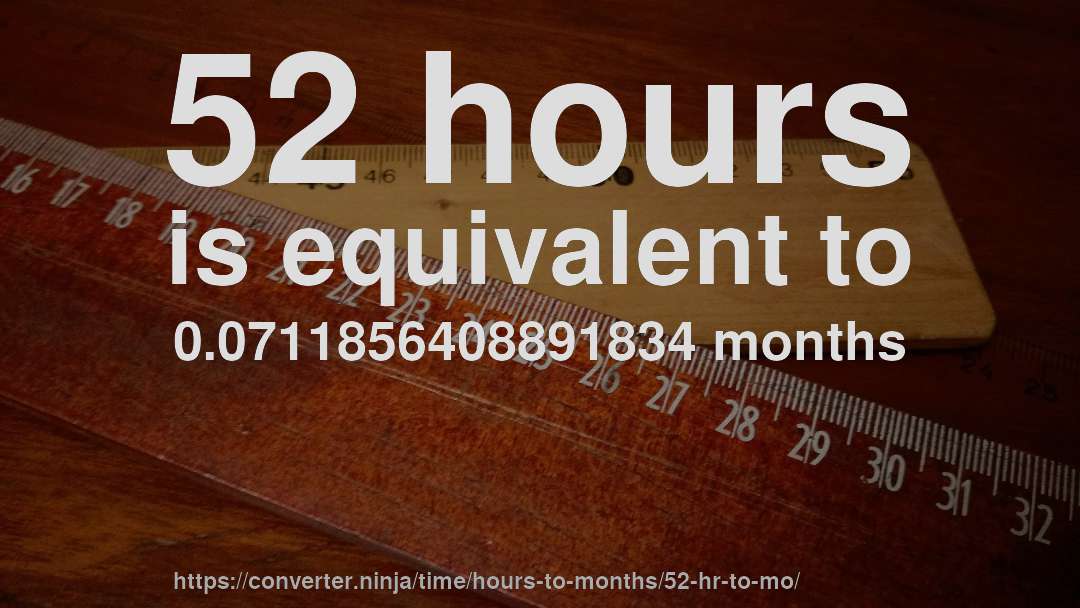
Result
The conversion result is: 52 hours is equivalent to 0.0711856408891834 months.
We know (by definition) that: 1 hr ≈ 0.0013689546 mo.
We can set up a proportion to solve for the number of months.
1 hr / 52 hr ≈ 0.0013689546 mo / x mo
Now, we cross multiply to solve for our unknown x:
x mo ≈ (52 hr / 1 hr) * 0.0013689546 mo → x mo ≈ 0.0711856392 mo
Conclusion:
52 hr ≈ 0.0711856392 mo
The inverse of the conversion factor is that 1 month is equal to 14.0477768761923 times 52 hours.
It can also be expressed as: 52 hours is equal to 1 / 14.0477768761923 months.
Approximation
An approximate numerical result would be: fifty-two hours is about zero point zero seven months, or alternatively, a month is about fourteen point zero five times fifty-two hours.
Units involved
This is how the units in this conversion are defined:
Hours
"Midnight (or noon) on a 12-hour analog clock An hour is a unit of time conventionally reckoned as 1⁄24 of a day and scientifically reckoned as 3,599–3,601 seconds, depending on conditions.The seasonal, temporal, or unequal hour was established in the ancient Near East as 1⁄12 of the night or daytime. Such hours varied by season, latitude, and weather. It was subsequently divided into 60 minutes, each of 60 seconds. Its East Asian equivalent was the shi, which was 1⁄12 of the apparent solar day; a similar system was eventually developed in Europe which measured its equal or equinoctial hour as 1⁄24 of such days measured from noon to noon. The minor variations of this unit were eventually smoothed by making it 1⁄24 of the mean solar day, based on the measure of the suns transit along the celestial equator rather than along the ecliptic. This was finally abandoned due to the minor slowing caused by the Earths tidal deceleration by the Moon.In the modern metric system, hours are an accepted unit of time equal to 3,600 seconds but an hour of Coordinated Universal Time (UTC) may incorporate a positive or negative leap second,[a] making it last 3,599 or 3,601 seconds, in order to keep it within 0.9 seconds of universal time, which is based on measurements of the mean solar day at 0° longitude."
Months
"A month is a unit of time, used with calendars, which is approximately as long as a natural period related to the motion of the Moon; month and Moon are cognates. The traditional concept arose with the cycle of moon phases; such months (lunations) are synodic months and last approximately 29.53 days. From excavated tally sticks, researchers have deduced that people counted days in relation to the Moons phases as early as the Paleolithic age. Synodic months, based on the Moon s orbital period with respect to the Earth-Sun line, are still the basis of many calendars today, and are used to divide the year."
[1] The precision is 15 significant digits (fourteen digits to the right of the decimal point).
Results may contain small errors due to the use of floating point arithmetic.
ncG1vNJzZmibn6PDpr7Tnqlnppmjt6J7wKanaKyZorJwtM6uqaxlpKR6rrvNrZ%2BsZ2Vneqm%2BjK2mZqWfZA%3D%3D